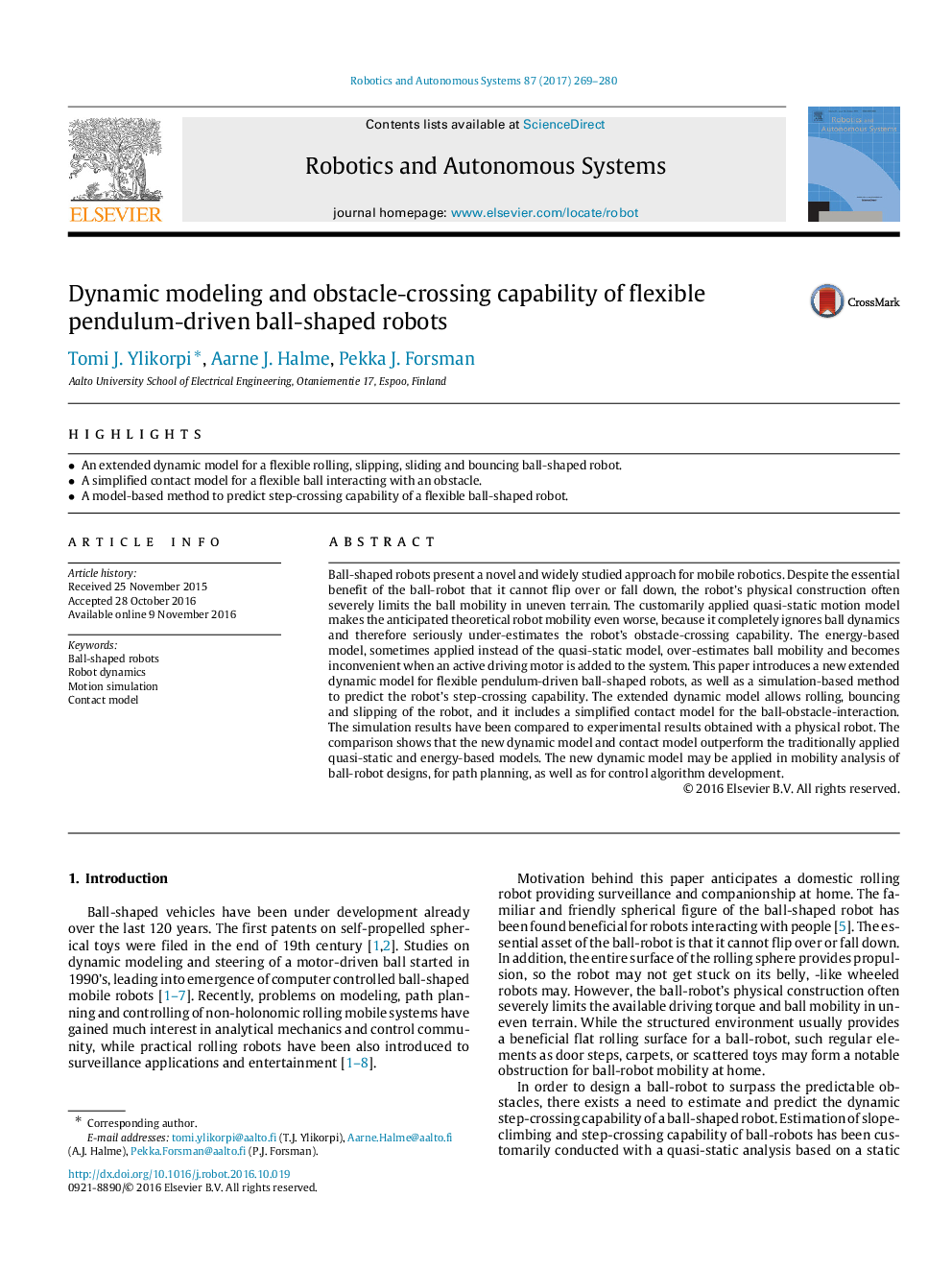| Article ID | Journal | Published Year | Pages | File Type |
|---|---|---|---|---|
| 4948846 | Robotics and Autonomous Systems | 2017 | 12 Pages |
Abstract
Ball-shaped robots present a novel and widely studied approach for mobile robotics. Despite the essential benefit of the ball-robot that it cannot flip over or fall down, the robot's physical construction often severely limits the ball mobility in uneven terrain. The customarily applied quasi-static motion model makes the anticipated theoretical robot mobility even worse, because it completely ignores ball dynamics and therefore seriously under-estimates the robot's obstacle-crossing capability. The energy-based model, sometimes applied instead of the quasi-static model, over-estimates ball mobility and becomes inconvenient when an active driving motor is added to the system. This paper introduces a new extended dynamic model for flexible pendulum-driven ball-shaped robots, as well as a simulation-based method to predict the robot's step-crossing capability. The extended dynamic model allows rolling, bouncing and slipping of the robot, and it includes a simplified contact model for the ball-obstacle-interaction. The simulation results have been compared to experimental results obtained with a physical robot. The comparison shows that the new dynamic model and contact model outperform the traditionally applied quasi-static and energy-based models. The new dynamic model may be applied in mobility analysis of ball-robot designs, for path planning, as well as for control algorithm development.
Related Topics
Physical Sciences and Engineering
Computer Science
Artificial Intelligence
Authors
Tomi J. Ylikorpi, Aarne J. Halme, Pekka J. Forsman,
